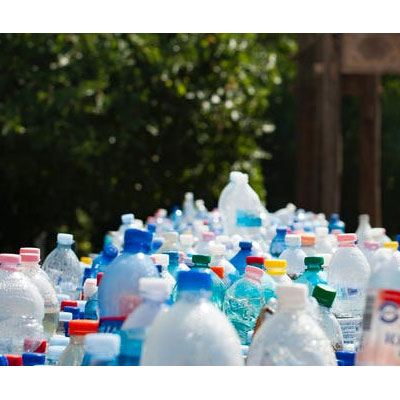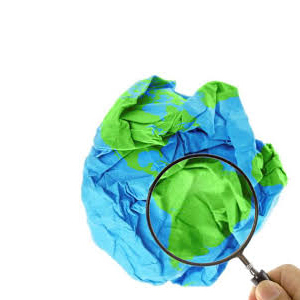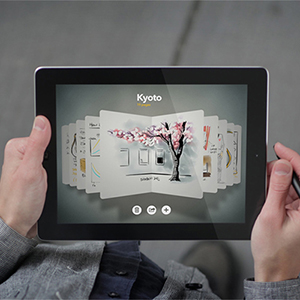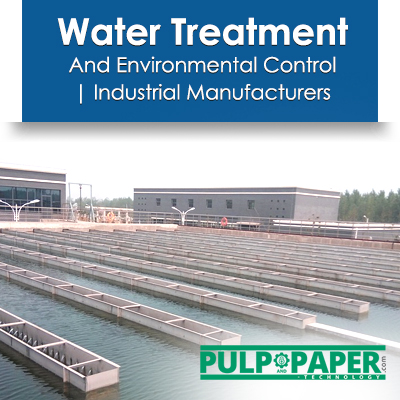Articles
Plastic Waste Recycling

Today Plastic waste is a very big problem for us to dispose. Paper Mills also face a huge problem for the disposal of the Plastic waste (Residual Plastic) which is generated from their own Plant. Keeping in mind this problem we have come out with a Plastic Waste Recycling Plant which helps the Paper Mills to convert there Residual Plastic Waste into a very innovative and eco-friendly product.
Plastic recycling is the process of recovering scrap or waste plastics and reprocessing the material into useful products, sometimes completely different in form from their original state. For instance, this could mean melting down soft drink bottles and then casting them as plastic chairs and tables. Typically a plastic is not recycled into the same type of plastic, and products made from recycled plastics are often not recyclable. Recently, Mike Biddle of MBA polymers has made advances in plastics recycling.
When compared to other materials like glass and metal materials, plastic polymers require greater processing to be recycled. Plastics have a low entropy of mixing, which is due to the high molecular weight of their large polymer chains. A macromolecule interacts with its environment along its entire length, so its enthalpy of mixing is large compared to that of an organic molecule with a similar structure. Heating alone is not enough to dissolve such a large molecule; because of this, plastics must often be of nearly identical composition in order to mix efficiently.
When different types of plastics are melted together they tend to phase-separate, like oil and water, and set in these layers. The phase boundaries cause structural weakness in the resulting material, meaning that polymer blends are only useful in limited applications.
Another barrier to recycling is the widespread use of dyes, fillers, and other additives in plastics. The polymer is generally too viscous to economically remove fillers, and would be damaged by many of the processes that could cheaply remove the added dyes. Additives are less widely used in beverage containers and plastic bags, allowing them to be recycled more often. Yet another barrier to removing large quantities of plastic from the waste stream and landfills is the fact that many common but small plastic items lack the universal triangle recycling symbol and accompanying number. A perfect example is the billions of plastic utensils commonly distributed at fast food restaurants or sold for use at picnics.
The use of biodegradable plastics is increasing. If some of these get mixed in the other plastics for recycling, the reclaimed plastics are not recyclable because of the variance in properties and melt temperatures.
In general the recycling process involves plastics being sorted according to their resin identification code, a method of categorization of polymer types, which was developed by the Society of the Plastics Industry in 1988. Polyethylene terephthalate, commonly referred to as PET, for instance, has a resin code of 1. They are also often separated by color. The plastic recyclables are then shredded. These shredded fragments then undergo processes to eliminate impurities like paper labels. This material is melted and often extruded into the form of pellets which are then used to manufacture other products
| Also Read: The Crucial Role of Recycling Waste Paper in Environmental Conservation |
Ambica Hydraulics Pvt. Ltd which is among India’s leading manufacturers and exporters of Industrial Presses follows the following process for recycling Plastic waste.
Process for Recycling Plastic Waste at Ambica Hydraulics:
- » Sorting of Plastic Waste- Sorting of Material is required to remove metallic and ceramic heavy impurities which can damage processing machinery.
- » Conveyor for Feeding into Shredding Machine - After sorting of Plastic Waste, it will be transferred to the Conveyor for feeding into the Shredding Machine for fine cutting of Material.
- » Shredding of Plastic Waste - The Plastic Waste is shredded into required pMats for desired end products. article size so that it can be spread evenly to form
- » Washing of Shredded Plastic Waste - The Shredded Plastic Waste is washed and cleaned so that the other waste particle gets separated and can be removed easily.
- » Removal of Waste from Plastic during Washing - The other waste such as dust, clothes, sand, Small Iron Particles etc can be removed.
- » Dewatering - The wet plastic is now transferred to the Dewatering Machine to remove water.
- » Drying – Conveying – Storage - The Plastic is now Pneumatically Conveyed and Dried together and send to the Collection Bin.
- » Loading Lifting Table & Pressing of Mat - The Material assembled now will be transferred to the Loading Lifting Table for easy feeding into the HOT PRESS. The HOT PRESS is used for applying Heat and Pressure on the assembled material for compression and curing of material.
- » Formation of Corrugation Sheet - The Plain Sheet that comes out of the HOT PRESS can be given a form of Corrugated Roof Sheet. Corrugation of the sheet is done manually as shown in the image.
Ambica Hydraulics Pvt. Ltd company designs & manufactures specialized equipment for different types of Industries. Ambica Hydraulics Pvt. Ltd is into manufacturing of the sheets made from plastic waste. It believes in helping to maintain the Environment “Clean, Green & Healthy”.
Advantages of the Recycled Sheets
- » The Sheets are Unbreakable and are more durable than Cement Sheets.
- » The ambient Temperature under these roofing sheets is less by 5`c in comparison to Asbestos Roofing Sheets.
- » The Flat Sheets can be used in making partitions also to enhance decorative effect.
- » Factory Shades, Small Huts or Site office can be made using the Sheets.
- » The Sheets are Anti-Fungal.
- » The Sheets are light weight, easy to handle.
- » It is Cost Effective as light Steel Structures can be used.
- » The Multi-color / Greenish Effect of the Sheet are soothing to the eyes and can be used without paint.
Many companies today are recycling waste plastics and reusing them. These Recycled Plastics has various Applications like -
PET - Post-consumer polyethylene terephthalate (PET) containers are sorted into different color fractions, and baled for onward sale. PET recyclers further sort the baled bottles and they are washed and flaked (or flaked and then washed). Non PET fractions such as caps and labels are removed during this process. The clean flake is dried. Further treatment can take place e.g. melt filtering and pelletising or various treatments to produce food contact approved recycled PET (RPET).
RPET has been widely used to produce polyester fibres. This sorted post-consumer PET waste is crushed, chopped into flakes, pressed into bales, and offered for sale.
PVC - PVC- or Vinyl Recycling has historically been difficult to perfect on the industrial scale. But within the last decade several viable methods for recycling or upcycling PVC plastic have been developed.
HDPE - The most-often recycled plastic, HDPE (high-density polyethylene) or number 2, is down cycled into plastic lumber, tables, roadside curbs, benches, truck cargo liners, trash receptacles, stationery (e.g. rulers) and other durable plastic products and is usually in demand.
Other plastics - The white plastic polystyrene foam peanuts used as packing material are often accepted by shipping stores for reuse. Similarly, agricultural plastics such as mulch film, drip tape and silage bags are being diverted from the waste stream and successfully recycled[15] into much larger products for industrial applications such as plastic composite railroad ties.[16] Historically, these agricultural plastics have primarily been either land filled or burned on-site in the fields of individual farms.
But in today's new eco-friendly world there has been more of a demand for “green” products. As a result, many clothing companies have started looking for ways to take advantage of this new market and new innovations in the use of recycled PET fabric are beginning to develop. These innovations included different ways to process the fabric, to use the fabric, or blend the fabric with other materials. Some of the fabrics that are leading the industry in these innovations include Billabong's Eco-Supreme Suede, Livity's Rip-Tide III, Wellman Inc's Eco-fi(formerly known as EcoSpun), and Reware's Rewoven. Some additional companies that take pride in using recycled PET in their products are Crazy Shirts and Playback.



